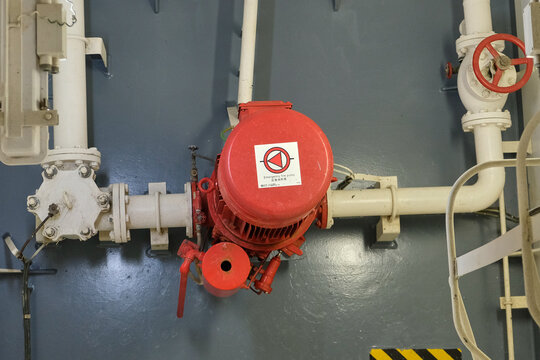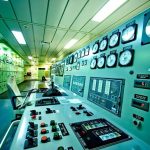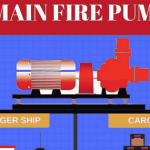For a seafarer, working on a ship means dealing with several challenges on a daily basis, for which, he/she needs to be prepared at all times. Fire pump on a ship is an essential machinery which helps seafarers to tackle extreme emergency situations involving fire. These marine firefighting pumps are also popularly known as Marine Fifi Pumps.
Usually, centrifugal pumps are used as marine fire pumps as they have high flow capabilities and can swiftly handle water and foam. In the event of a fire on a ship, it is very important that sufficient water is available at apt pressure, and an alternate arrangement is made in case one fire pump fails to operate or its controls are inaccessible. For this purpose, multiple marine firefighting pumps are required on board.
Main Fire Pumps:
The main fire pumps installed on ships are located inside the ship’s engine room, usually at the bottom platform. They are electrically driven from the main supply of the ship.
It is very common to find them installed near general service pump and ballast pumps. The general service pump lines are interconnected with the fire main and at times are used to provide water to the fire system. In some settings, they are also called general service and fire pump. These pumps should not be used for pumping oil in any case. A changeover arrangement may be provided to use the main fire pump for general service, only when it is approved by the administration.

The general service and fire pump supply water to the following:
1. To the fire hose connections in the engine room, main deck, accommodation, shaft tunnel, steering gear room etc.
2. To the anchor washing at forecastle
3. As driving water for the ejector fitted in the cargo hold bilges
4. As driving water for the ejector fitted in the dangerous cargo hold bilges
5. To the swimming pool, if fitted
Capacity & Requirements for Main Fire Pumps:
The number of fire pumps and their capacity will depend on the type of ship and its gross tonnage.
For Passenger ships –
· Passenger ships of less than 4000 GT should have at least two independent fire pumps
· For passenger ships more than 4000GT, there should be at least three independent fire pumps installed
· The fire pump should be capable of producing the quantity of water not less than 2/3rd of the quantity given by bilge pumps
For Cargo Ships –
· For cargo ships of more than 1000GT, at least two fire pump should be installed with an independent driving arrangement
· For cargo ships which are less than 1000GT, the number of fire pumps to be installed will be decided by the administration
· The installed fire pumps should be capable of discharging a quantity of water not less than 4/3rd of the quantity given by bilge pumps in a passenger ship of the same dimension, provided that total required capacity of the pumps need not exceed 180 m³/hr in a cargo ship
· Each main fire pump for cargo ships shall have a capacity not less than 80% of the total required capacity divided by the minimum number of required fire pumps but not less than 25 m3/hr with at least discharge of water with 2 jets

Other Important Requirements –
If the centrifugal pumps are used as a fire pump, non-return valves are fitted to prevent loss of water back through the open line when the pump is not working.
In case of positive displacement pumps used as a fire pump, a relief valve must be fitted to counter the rise in pressure if the line valve is closed and the pump is operated.
The safe line pressure will depend on the design of the fire line and capacity of the pump and it is governed by the administration.


